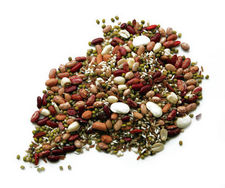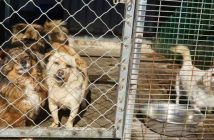In praise of porridge
 It seems like almost every Chinese festival is related to food – dumplings for Spring Festival, moon cakes for the Mid-Autumn Festival and zongzi (sticky rice wrapped in leaves) for the Dragon Boat Festival. Taking place each December 8, Laba is a Han Chinese festival where tradition calls for rice porridge.
It seems like almost every Chinese festival is related to food – dumplings for Spring Festival, moon cakes for the Mid-Autumn Festival and zongzi (sticky rice wrapped in leaves) for the Dragon Boat Festival. Taking place each December 8, Laba is a Han Chinese festival where tradition calls for rice porridge.
In ancient China, people celebrated the harvest and made sacrifices to the gods and their ancestors for good luck in the following year. Some parts of China regard Laba as the beginning of Spring Festival. The twelfth month in the lunar calendar is called “là” (腊), and eight is “Bā” (八) in Chinese, which is how the name Laba was derived.
To make Laba rice porridge, glutinous rice is boiled for hours with various beans, millet, Chinese sorghum, dates, peas, dried lotus seeds, walnuts and almonds. Adding meat yields a savory flavor, while sugar sweetens the porridge.
The Laba Festival originated in the Song dynasty (960-1279) and became popular during the Qing dynasty (1644-1911). People started preparing rice porridge the night before Laba; they washed the rice, peeled the nuts and fruits, and boiled them from midnight until the early morning. They carved nuts into the shapes of men, animals or flowers; one popular creation was the “Fruit Lion,” made of a dried date shaped into the body of a lion, walnuts that stood for the head and feet, and an almond for the tail.
According to a well-known legend, Laba marks the day the first Buddha and founder of the Buddhist religion, Sakyamuni, attained enlightenment. Sakyamuni, a prince in India, wanted to save his people from illness and pain. He abandoned his royal position and went off to seek wisdom. For six years he endured the harshest of living conditions and survived on cereal grains. Finally, on the eighth day of December in the lunar calendar, he finally understood the meaning of life while sitting under the bodhi tree. Since then, monks have prepared rice porridge to commemorate the Buddha’s enlightenment.
Some people also believe eating rice porridge celebrates Yuè Feī (岳飞), a famous general from the Song dynasty. When the general led his army to fight against the enemy in winter, the army was short of food. So local people collected all the food they had and put everything into a big pot of boiling water. After Yue Fei and his army ate this porridge, they successfully defeated their enemies on the eighth night of the twelfth month.
 Stories aside, Laba rice porridge has the rich flavors and nutrition that make for a perfect winter food. It contains many grains – including glutinous rice, oat, and corn – several types of beans and dried nuts, as well as melon seeds, lotus seeds and preserved fruits. Northerners like to cook porridge with sugar, while southerners prefer a salty porridge made with meat. Because of its ingredients, Laba porridge is said to aid in digestion, strengthen the spleen and calm nerves. Perhaps this is why Laba porridge is also called bābǎo porridge (八宝粥), the porridge of eight treasures.
Stories aside, Laba rice porridge has the rich flavors and nutrition that make for a perfect winter food. It contains many grains – including glutinous rice, oat, and corn – several types of beans and dried nuts, as well as melon seeds, lotus seeds and preserved fruits. Northerners like to cook porridge with sugar, while southerners prefer a salty porridge made with meat. Because of its ingredients, Laba porridge is said to aid in digestion, strengthen the spleen and calm nerves. Perhaps this is why Laba porridge is also called bābǎo porridge (八宝粥), the porridge of eight treasures.



